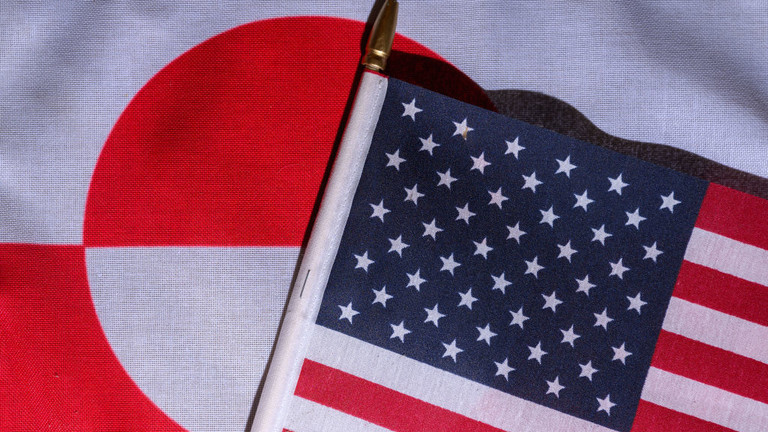This article was originally published by Ramon Tomey at Natural News.
-
- The U.S. has a history of secret and unethical medical and military experiments, including radiation exposure, biological warfare tests, and deliberate infections, often conducted without consent.
-
- Key examples include the 1932 Tuskegee Syphilis Study (withholding treatment from Black men), the 1940 malaria experiments on prisoners, and the Rockefeller Institute’s 1931 cancer cell injections.
-
- From 1949 to 1969, the military released harmful bacteria (e.g., Serratia marcescens in San Francisco) and chemicals (e.g., zinc cadmium sulfide over Winnipeg) in populated areas to study dispersal patterns.
-
- Experiments included spraying bacteria in airports (Reagan National), releasing mosquitoes carrying dengue fever (Georgia, Florida, and Puerto Rico), and contaminating subway systems (NYC and Chicago) without public knowledge.
-
- Many tests remained classified for decades; few victims received justice. These cases highlight ongoing concerns about ethics, transparency and human rights in research.
The history of medical and military research in the U.S. is marred by a series of unethical experiments conducted on unwitting human subjects. From secret radiation exposure to biological warfare tests on civilian populations, these disturbing experiments reveal a pattern of disregard for human rights in the name of scientific advancement and national security.
Early experiments: Cancer, syphilis, and malaria
In 1931, the Rockefeller Institute for Medical Investigations conducted experiments in which human subjects were deliberately infected with cancer cells – without their knowledge or consent. Around the same time, Dr. Cornelius Rhoads, under the auspices of government and civilian hospitals, began exposing patients to high doses of radiation to study its effects. Rhoads later became a key figure in the U.S. biological weapons program.
One of the most infamous cases of unethical medical research was the Tuskegee Syphilis Study, which began in 1932. The U.S. Public Health Service recruited 600 African American men, 200 of whom had syphilis, under the false promise of free medical care. (Related: Think government wants to help you? Revisit the true, horrifying history of the Tuskegee medical experiments on blacks.)
Researchers withheld treatment – even after penicillin became the standard cure in the 1940s – to observe the disease’s progression. The study continued for 40 years, only ending in 1972 after public outcry.
In 1940, 400 prisoners in Chicago were infected with malaria to test experimental drugs. These inmates were subjected to painful symptoms without proper medical oversight, highlighting the exploitation of vulnerable populations in medical research.
Biological and chemical warfare testing on civilians
Between 1949 and 1969, the U.S. military and intelligence agencies conducted secret biological warfare tests in at least 239 populated areas – including New York City (NYC), Washington, D.C., San Francisco, and St. Louis. These experiments involved releasing harmful bacteria and chemical agents into the air to study their dispersal patterns.
One of the most alarming incidents occurred in September 1950, when the U.S. Navy released Serratia marcescens, a potentially pathogenic bacterium, off the coast of San Francisco. The bacteria spread through the city, leading to multiple infections and at least one death.
During the 1950s and 1960s, the U.S. Army and the Central Intelligence Agency (CIA) conducted aerosol dispersion tests using the toxic compound zinc cadmium sulfide over populated areas in the U.S., Canada, and Mexico. In 1953, 36 tests were performed on citizens of Winnipeg in Canada’s Manitoba province, where the chemical was sprayed to assess its potential to induce cancer.
Military experiments on public spaces
The Vietnam War era saw some of the most brazen biological experiments. In one instance, the U.S. Army sprayed a bacterial mist at unsuspecting travelers in Washington, D.C.’s Ronald Reagan National Airport to test the effectiveness of biological agents in crowded spaces.
Government scientists also placed Bacillus globigii, a bacterium linked to food poisoning and infections, inside light bulbs and dropped them into the NYC and Chicago subway systems. The goal was to study how pathogens could spread in urban environments without informing the public of the risks. The military also tested B. globigii in Hawaii, deploying it from a submarine into the port of Oahu to simulate a biological attack on a naval base.
In another shocking case, the U.S. military and the CIA released dengue fever-carrying mosquitoes in Georgia and Florida, leading to outbreaks of the debilitating disease. Similar tests were conducted in Puerto Rico, where civilians were exposed to biological agents without their knowledge.
Legacy and accountability
Many of these experiments remained classified for decades, only coming to light through Freedom of Information Act requests and investigative journalism. While some victims and their families have sought justice, most received no compensation or acknowledgment from the government.
These unethical experiments raise critical questions about medical ethics, government transparency, and human rights. They serve as a grim reminder of what can happen when scientific research is conducted without oversight or consent – a warning that remains relevant today as new technologies and military strategies emerge.
Watch this video about the infamous Tuskegee Syphilis Experiment.
This video is from the Anti-Disinformation channel on Brighteon.com.











0 Comments